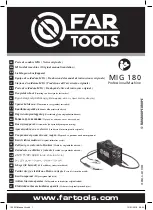
6 / 78
P/N 1070346 (ML) • REV G • ISS 10APR18
Menu 5, View Signal Level
You can check the received signal level of each sensor using
menu 5. To ensure the sensor is installed within an effective
range of the ATS1235 or repeater, the installer can check the
signal strength of a
wireless sensor’s last event transmission
on the RAS screen.
The RSSI indicator shows signal level for the selected zone as
a bar indicator. 5 bar level (IIIII) means the best possible
signal, 0 bar level is the worst one.
The approximate connection quality levels are listed in Table 5
below.
Table 5: RSSI values
Value
(dBm)
Screen bar
indicator
Received signal
<−99
[...........]
Signal is insufficient. The sensor does not
work.
Move the receiver or use a repeater.
−98 to −85 [.I.........]
Weak signal. The senor may work, but the
operation is not recommended, because the
wireless device will cause RF supervisory
faults.
−84 to −69 [.I.I.......]
Medium signal. The sensor works, although
supervision for this RF device may have to
be switched off.
−68 to −53 [.I.I.I.....]
Good signal.
−52 to −37 [.I.I.I.I...]
Strong signal
>−37
[.I.I.I.I.I.]
Excellent signal.
See
an appropriate control panel programming manual
for
more information.
Note:
For a reliable communication it is strongly recommended
to maintain minimum 2 bar signal level, which is equal to the
value between −84 and −69 dBm.
Enter the number of the zone and press Enter to view the
signal strength. If the zone is not programmed or if the wireless
DGP has just been powered up, the RAS displays 0 bar signal
level until the sensor transmits an alarm or supervision
message.
An intrusion sensor transmits a supervision message every
18 minutes, a smoke sensor
— every 63 minutes.
When a successful signal is received the RAS displays the
signal strength, and sounds two beeps.
Note:
The sensitivity is reduced by −6 dB by default while the
DGP is in programming mode. The sensitivity can be changed
in
“Menu 12, Receiver Sensitivity” on page 7.
Menu 6, Program Fob
Four-button fobs are programmed in a separate part of the
DGP zone database. Fob button sets can be programmed in
any combination of relays (outputs) and users:
Table 6: Available fob setting sets
Button set 1
Button set 2
Not configured
Not configured
Relay
Not configured
Not configured
Relay
Relay
Relay
User
Relay
Button set 1
Button set 2
Relay
User
User
User
A user represents a person (with automatic access to arm and
disarm allocated areas), and is identified by a user number
from 1 to 65535.
When both button sets 1 and 2 are used for users, different
users can be defined to arm and disarm different areas.
Relays activate and deactivate devices (such as garage doors
or lights) and can be identified by a number from 1 to 255.
After entering menu 6, select one of the 16 key fob numbers to
prepare the programming / learning mode.
The keyfob needs a special procedure to start the learn-in
mode. See an appropriate keyfob manual for precise
instructions.
After a confirmation of two beeps the display asks if you want
to program a user or a relay. Depending on the decision if the
key fob buttons will be connected to a user or a relay, enter the
relevant user number or relay number. When finished, exit this
menu by choosing 0.
Deleting or editing a fob
The fob number you enter must be within the valid range of
addresses for the DGP.
If the address is occupied, it gives you the option to delete or to
edit the device.
When selected Edit and confirmed by pressing Enter, you are
able to reprogram the user and relay settings.
When selected Delete and confirmed by pressing Enter, the
display shows: “Delete device?”
Confirm with the Menu key to delete the device completely.
Menu 7, View Fob
Menu 7 lets you to view the user and relay details for any fob.
Also, the fob battery status (normal or low) is displayed.
Supervision Time
A programmable supervision function checks the state of the
devices in the field. Transmitters send one supervisory signal
every 18 minutes and are related to the lifetime of the battery
in the detectors.
The DGP has three menus for supervision:
•
Short supervision
•
Long supervision
•
Smoke supervision
The supervision timers in the sensors are “dithered” by a small
time so that transmissions occur on a random basis with the
effect of minimizing collisions in larger installations.
Transmission is subject to these rules:
•
Four-
button fobs don’t transmit supervision signals
•
Supervision time cannot be set for individual sensors, only
individual wireless DGPs
•
The maximum supervision time is 32 hours
•
The minimum supervision time is 20 minutes
Содержание ATS1235
Страница 78: ...78 78 P N 1070346 ML REV G ISS 10APR18 ...







































